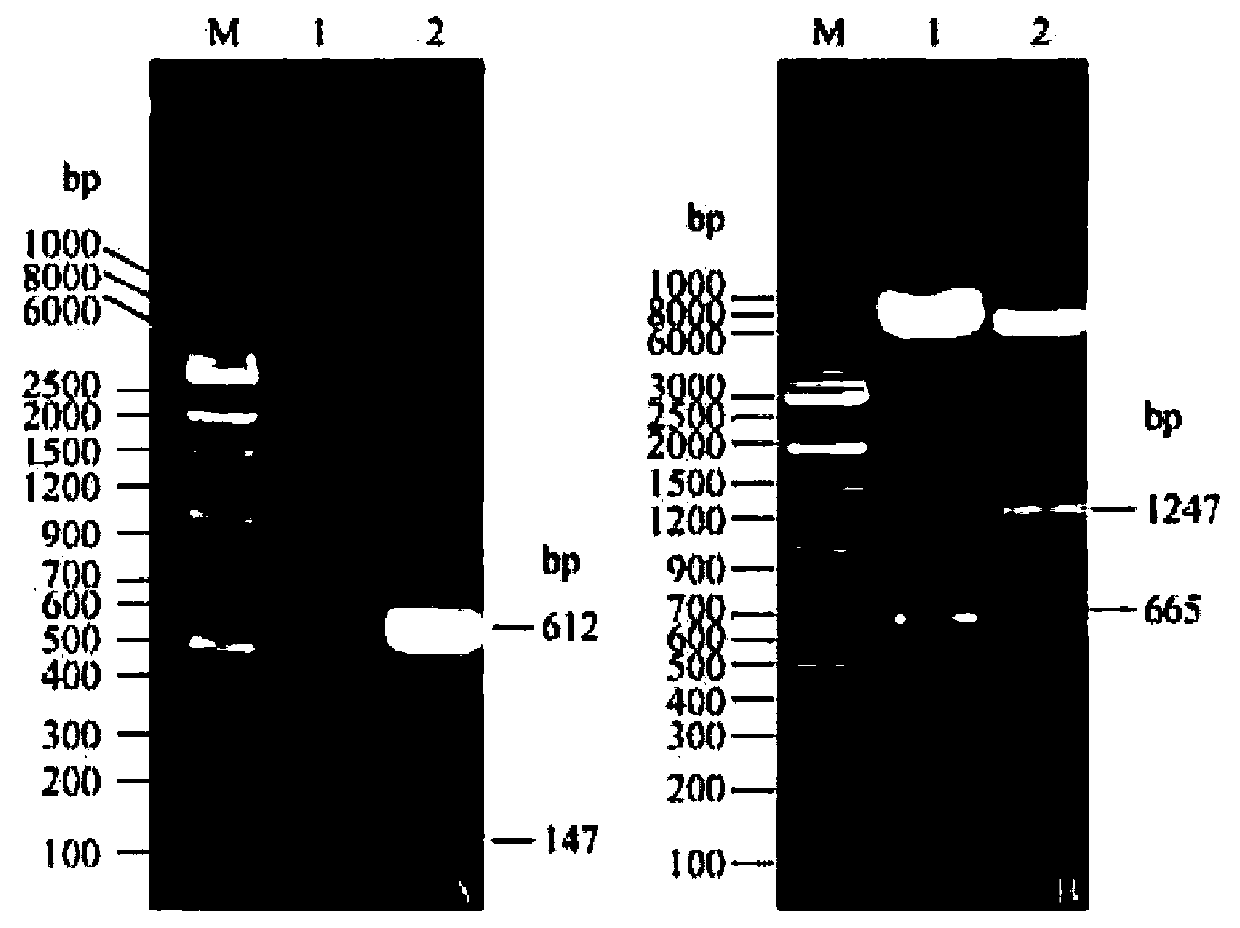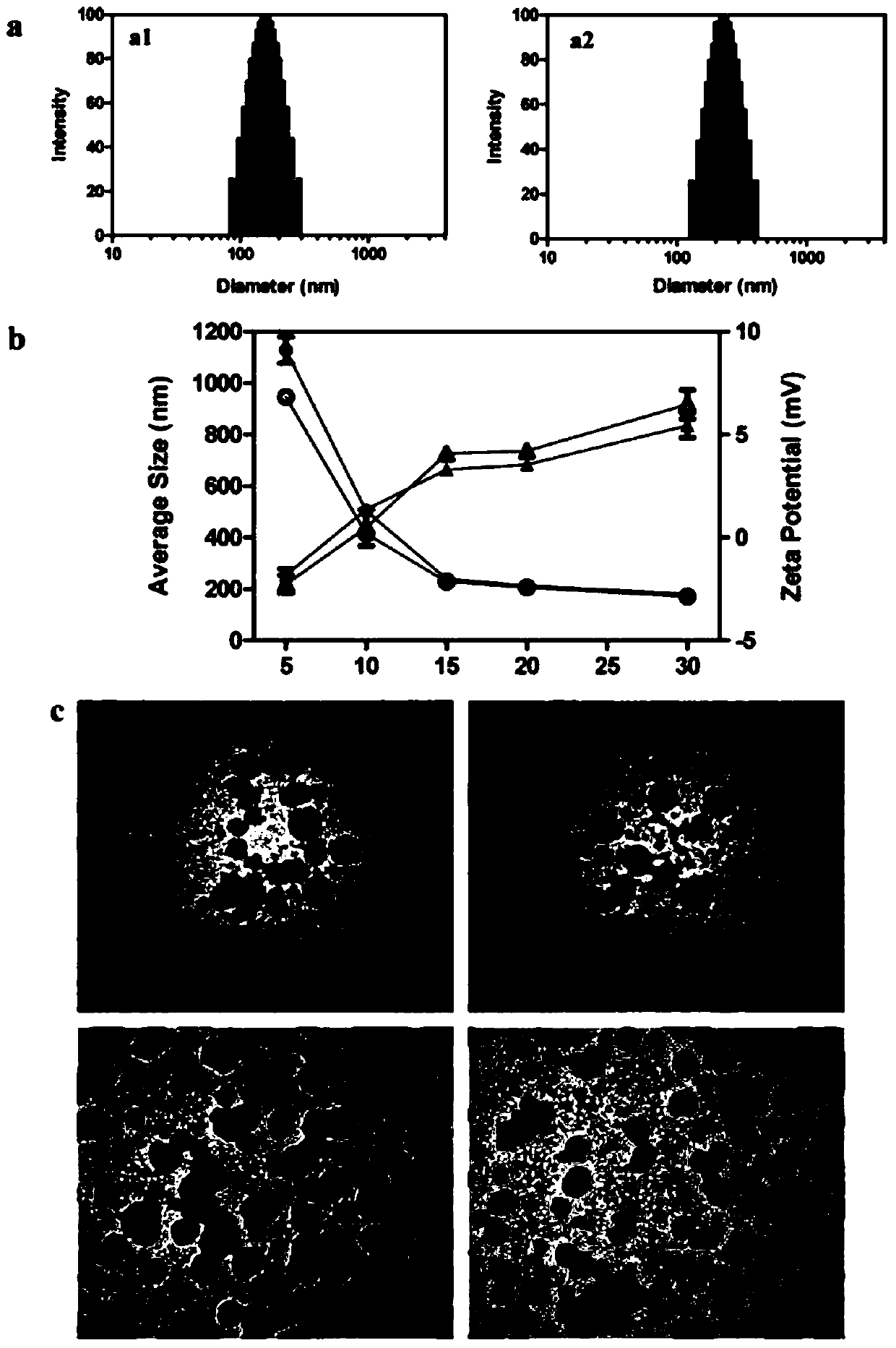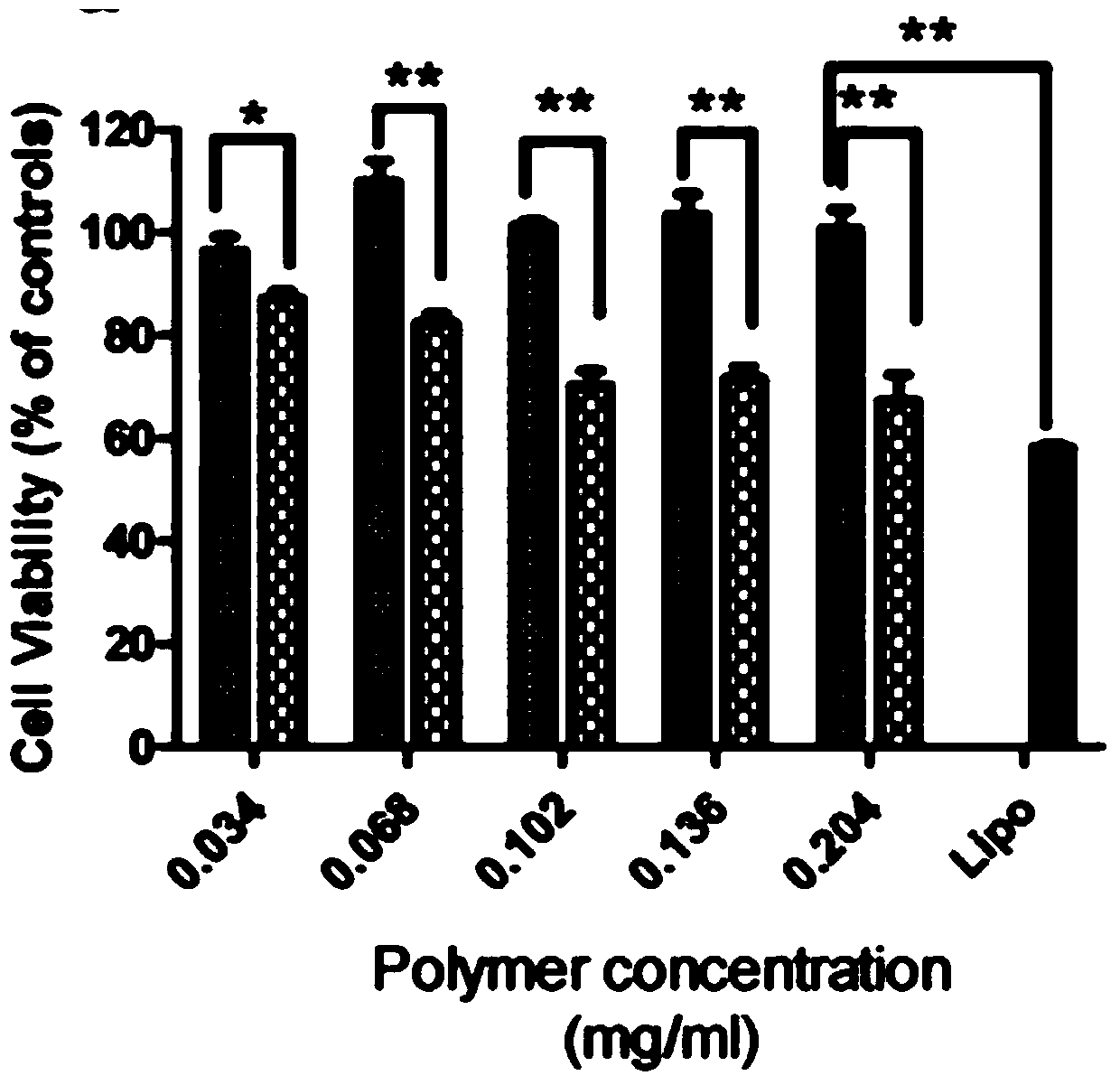Recombinant plasmids based on polyethylene glycol-polylactic acid glycolic acid-polylysine composite nanomaterials and their preparation and application
A technology of poly(lactic acid hydroxyethanol) and composite nanomaterials, which is applied in the field of medicine to achieve the effect of delaying progress and reducing apoptosis
- Summary
- Abstract
- Description
- Claims
- Application Information
AI Technical Summary
Problems solved by technology
Method used
Image
Examples
Embodiment 1
[0042] Example 1: Construction of pSNAV2-CXCR3-pIRES-CXCL9
[0043] 1. Using the method of molecular cloning, the internal ribosome entry sites (internal ribosome entrysites, IRES) sequence was used to connect CXCR3 and CXCL9 to jointly clone into the rAAV expression plasmid pSNAV2.0, construct the recombinant plasmid pSNAV2-CXCR3-pIRES-CXCL9 and detect the recombinant Plasmid activity.
[0044] ① Construction of pIRES-CXCL9
[0045] The pCXCL9 N1 plasmid containing CXCL9 (purchased from Prospec, CHM-333) was separated by Sal and Not double-digestion low-melting point gel, and the CXCL9 fragment was recovered, and cloned into pIRES (purchased from Clontech, 631605 ) to construct the pIRES-CXCL9 plasmid in the B multiple cloning site.
[0046] ② Construction of pSNAV2-CXCR3-pIRES-CXCL9
[0047] Using the pSNAV2 cMyc plasmid (purchased from Invitrogen, VPI0017) containing the cMyc tag sequence as a template, the primers were designed as follows:
[0048] 5'-ACTTCTAGGCCTGTACG...
Embodiment 2
[0050] Example 2: mPPP composite nanomaterials entrapped pSNAV2-CXCR3-IRES-CXCL9 (mPPP-pSNAV2-TGFβ1-IRES-TIMP1, PSTIT).
[0051] Disperse 1.0 g of mPPP composite nanomaterials in PBS, adjust the pH to 7.2, filter and sterilize with a 0.22 μm Millipore membrane, and store at 4°C for use. Then 1.5 g of pSNAV2-CXCR3-IRES-CXCL9 was prepared into 50 μL (24-well plate) or 25 μL (96-well plate) DNA dilution solution with PBS (pH=7.2). According to the D / P value of 3, the mPPP composite nanomaterials were diluted in equal volume and slowly added dropwise to the DNA diluent, mixed well and left at room temperature for 30 minutes, which can be used for characterization or cell transfection experiments. Where N represents the number of moles of amino groups in the nanomaterial, and P represents the number of moles of phosphate groups in DNA (1 μg of DNA contains about 3 nmol of phosphate groups). Cell characterization experiment, detected by 90Plus Zeta type Zeta potential and particle ...
Embodiment 3
[0053] Embodiment 3: in vitro experiments, culturing sCS cells, and detecting the curative effect of composite nanomaterials;
[0054] In order to evaluate the effect of the complex mPPP-pSNAV2-TGFβ1-IRES-TIMP1, PSTIT) on cytotoxicity, the present invention uses the MTT method to detect the relative viability of the transfected sCS cells (MTT method, see "New Drug Pharmacology Research" edited by Lu Qiujun) Methods, 2007: 242-243).
[0055] The results of mPPP and PSTIT cell viability detection are as follows: image 3 As shown, both mPPP and PSTIT have no obvious cytotoxicity, and it can be seen that the PEG segment on the surface of nanoparticles can well shield excess positive charges, thereby greatly reducing cytotoxicity. Under the tested N / P ratio conditions, the blank polymer nanoparticle mPPP basically has no toxicity to cells, while PSTIT has obvious cytotoxicity under high N / P conditions.
PUM
| Property | Measurement | Unit |
|---|---|---|
| particle diameter | aaaaa | aaaaa |
Abstract
Description
Claims
Application Information
 Login to View More
Login to View More - R&D
- Intellectual Property
- Life Sciences
- Materials
- Tech Scout
- Unparalleled Data Quality
- Higher Quality Content
- 60% Fewer Hallucinations
Browse by: Latest US Patents, China's latest patents, Technical Efficacy Thesaurus, Application Domain, Technology Topic, Popular Technical Reports.
© 2025 PatSnap. All rights reserved.Legal|Privacy policy|Modern Slavery Act Transparency Statement|Sitemap|About US| Contact US: help@patsnap.com



